Antecedents
The SWE archives contain a series of letters from the Elsie Eaves Papers (bequeathed to the Society), which document the origins of the Society in the early 20th century. In 1919, a group of women at the University of Colorado helped establish a small community of women with an engineering or science background, called the American Society of Women Engineers and Architects. [2] While this organization was only recognized within the campus community, it set the foundation for the development of the international Society of Women Engineers. [3] This group included Lou Alta Melton, Hilda Counts, and Elsie Eaves. These women wrote letters to engineering schools across the nation asking for information on female engineering students and graduates. [4] They received responses from 139 women throughout 23 universities. [5] They also received many negative responses from schools that did not admit women into their engineering programs. [4] From the University of North Carolina, Thorndike Saville, Associate Professor of Sanitary Engineering wrote: "I would state that we have not now, have never had, and do not expect to have in the near future, any women students registered in our engineering department." [6] Some responses were generally supportive of women in engineering, but not of a separate society in particular. North Carolina State University's Dean Blake R Van Leer felt differently and encouraged future SWE president Katharine Stinson to be one of the first women to enroll and his daughter Maryly would later open a branch. [7] [8]
Many of the women contacted as a result of the inquiries wrote about their support for such an organization. Besides the Hazel Quick letter from Michigan, there was a reply from Alice Goff, expressing her support of the idea of a society for women in engineering and architecture: "Undoubtedly an organization of such a nature would be of great benefit to all members, especially to those just entering the profession." [6] The women in Michigan organized a group in 1914 called the T-Square Society. Although it was not clear if this group was a business, honorary, or social organization, it was proposed as a safe space for women to collaborate and share their ideas comfortably. [9]
History
Though the Society of Women Engineers did not become a formal organization until 1950, its origins date to the late 1940s, when shortages of men due to World War II provided new opportunities for women to pursue employment in engineering. Female student groups at Drexel Institute of Technology in Philadelphia and at Cooper Union and City College of New York in New York City began forming local meetings and networking activities. On April 3, 1949, seventy students attended a conference at Drexel to start organizing. These seventy students traveled from 19 universities. [10] National vice president Maryly Van Leer Peck and her mother Ella Lillian Wall Van Leer a women's right activist became heavily involved early on, they opened one of the first branches at Georgia Tech after her father Blake R Van Leer successfully lobbied to allow women to attend. Blake also encouraged numerous women to join his engineering program while at NC State. The Van Leers would actively support the organization throughout their lives. [11] [12] [13]
On the weekend of May 27–28, 1950, about fifty women representing the four original districts of the Society of Women Engineers – New York City, Philadelphia, Washington, D.C., and Boston – met for the first national meeting at The Cooper Union's Green Engineering Camp in northern New Jersey. [14] [15] During this first meeting, the society elected the first president of SWE, Beatrice Hicks. The first official annual meeting was held in 1951, in New York City. [16]
It was not until the 1960s, after Russia launched Sputnik and widespread interest in technological research and development intensified, that many engineering schools began admitting women. Membership in SWE doubled to 1,200 and SWE moved its headquarters to the United Engineering Center, in New York City.
After World War II, women were often discouraged from entering into engineering. During the war, their efforts had been seen as a patriotic duty; after the war, women in engineering were seen as an abnormality.
Over the next decade, an increasing number of young women chose engineering as a profession, but few were able to rise to management-level positions. SWE inaugurated a series of conferences (dubbed the Henniker Conferences [17] after the meeting site in New Hampshire) on the status of women in engineering, and in 1973 signed an agreement with the National Society of Professional Engineers in hopes of recruiting a larger percentage of working women and students to its ranks.
At the same time, SWE increasingly became involved in the spirit and activities of the larger women's movement. In 1972, a number of representatives from women's scientific and technical committees and societies (including SWE) met to form an alliance and discuss equity for women in science and engineering. This inaugural meeting eventually led to the formation of the Business and Professional Women's Foundation (BPWF). [18] In addition, SWE's council resolved in 1973 to endorse ratification of the Equal Rights Amendment, and a few years later, resolved not to hold national conventions in non-ERA-ratified states. The Equal Rights Amendment was first proposed by Alice Paul in the 1920s, after women gained the right to vote, and still has not been ratified to this day.
By 1982, the Society had swelled to 13,000 graduate and student members spread out over 250 sections across the country. The Council of Section Representatives, which in partnership with an Executive Committee had governed the Society since 1959, had become so large that SWE adopted a regionalization plan designed to bring the leadership closer to the membership. Today, SWE has over 40,000 student and professional members and continues its mission as a 501(c)(3) non-profit educational service organization.
The Society of Women Engineers organization exists today largely because the gender balance in engineering does not proportionally reflect population breakdowns of men and women in the United States. Encouragement of female students and promotion of engineering as a field of study for women is a necessary and fundamental function of the organization. Engineering and related fields are heavily male-dominated, in part because of gender socialization and artificially reinforced gender norms. Theories such as the STEM pipeline seek to understand and balance how different science, math, and engineering fields tend to over- or under-represent different groups of people in the United States. The Van Leer family still supports the organization to this day. [19] [13] [20]
Archives
While developing the Society, the organizers assembled masses of information into archives. A committee for these archives was established in 1953. The Society's archives were established in 1957 by the Archives Committee, who voluntarily collected and maintained the Society's records. The archives are currently located at the Walter P. Reuther Library at Wayne State University in Detroit, Michigan. [27] Some of the media includes information about a short-lived society involving both architects and engineers from 1920. The archives detail the history and creation of SWE as an organization and the history of women's involvement in engineering. Due to these collections of women's work on scientific projects, the archives show an alternate perspective on events such as the Space Race, which have traditionally been viewed as male-dominated endeavors but depended on the contributions of many women as well. [28] In 1993, SWE designated the Walter P. Reuther Library as the official repository of its historical materials.
Located within the Carey C. Shuart Women's Archive and Research Collection, [29] the Houston Area Section of the Society of Women Engineers contains correspondence, business and financial records, photographs, and publications of the organization.
Publications
In 1951, only a year after the society was first established, the SWE began publishing the Journal of the Society of Women Engineers, which included both technical articles and society news. In 1954, the journal was superseded by the SWE Newsletter, a magazine format that focused primarily on SWE and industry news. In 1980, it was again renamed, this time to US Woman Engineer. In 1993, the title was changed yet again to SWE, which remains its current periodical title, with the subtitle "magazine of the Society of Women Engineers". [40] The fifth volume of SWE was published in 2011 to celebrate the society’s 60th anniversary and to explore SWE's history in more depth using its archives. The current SWE Magazine, the magazine of the Society of Women Engineers, is published five times per year. [41]

The Tau Beta Pi Association is the oldest engineering honor society and the second oldest collegiate honor society in the United States. It honors engineering students in American universities who have shown a history of academic achievement as well as a commitment to personal and professional integrity. Specifically, the association was founded "to mark in a fitting manner those who have conferred honor upon their Alma Mater by distinguished scholarship and exemplary character as students in engineering, or by their attainments as alumni in the field of engineering, and to foster a spirit of liberal culture in engineering colleges".
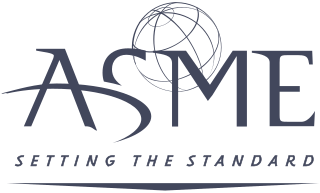
The American Society of Mechanical Engineers (ASME) is an American professional association that, in its own words, "promotes the art, science, and practice of multidisciplinary engineering and allied sciences around the globe" via "continuing education, training and professional development, codes and standards, research, conferences and publications, government relations, and other forms of outreach." ASME is thus an engineering society, a standards organization, a research and development organization, an advocacy organization, a provider of training and education, and a nonprofit organization. Founded as an engineering society focused on mechanical engineering in North America, ASME is today multidisciplinary and global.
The Society of Hispanic Professional Engineers (SHPE) was founded in Los Angeles, California in 1974 by a group of engineers employed by the city of Los Angeles. Their objective was to form a National organization of professional engineers to serve as role models in the Latino community.

The National Society of Black Engineers (NSBE) is a society that was founded in 1975 at Purdue University, located in West Lafayette, Indiana. It is one of the largest student-run organizations in the United States, with core activities centered on improving the recruitment and retention of Black and other minority engineers in both academia and industry.

The Society of Petroleum Engineers (SPE) is a 501(c)(3) not-for-profit professional organization.

The American Society for Engineering Education (ASEE) is a non-profit member association, founded in 1893, dedicated to promoting and improving engineering and engineering technology education. The purpose of ASEE is the advancement of education in all of its functions which pertain to engineering and allied branches of science and technology, including the processes of teaching and learning, counseling, research, extension services and public relations. ASEE administers the engineering technology honor society Tau Alpha Pi.
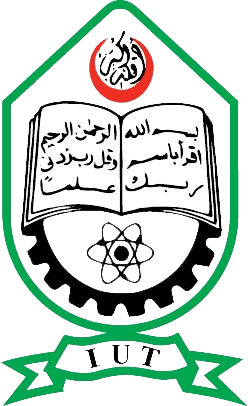
Islamic University of Technology, commonly known as IUT, is an international engineering technological research university located in Gazipur. IUT offers undergraduate and graduate programs in engineering and technical education.
Elsie Eaves was a pioneering American female engineer, the first female associate member of the American Society of Civil Engineers (ASCE), and a founding member of the American Association of Cost Engineers.

Blake Ragsdale Van Leer was an engineer and university professor who served as the fifth president of Georgia Institute of Technology from 1944 until his death in 1956.
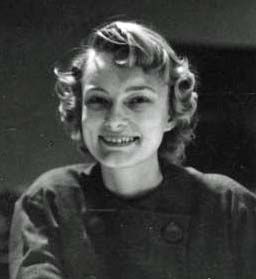
Maryly Van Leer Peck was an American academic and college administrator. She founded numerous programs in Guam, one of them being the Community Career College at the University of Guam. She was the first female president of a public institution of higher learning in Florida, the first female president of a Florida community college while president of Polk Community College aka Polk State College. She was one of the first female graduates of the School of Engineering at Vanderbilt University and the first woman to graduate with a degree in chemical engineering. She was also the first woman to receive an M.S. and a Ph.D. in engineering from the University of Florida. She also founded Society of Women Engineers chapters, and was an active board member.
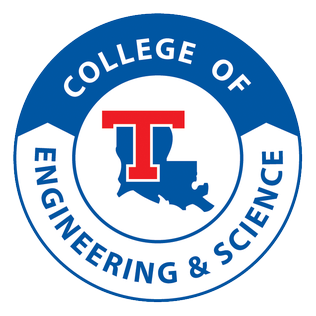
The College of Engineering and Science (COES) is one of five colleges at Louisiana Tech University, a public research university in Ruston, Louisiana. The roots of the college date back to the founding of Louisiana Tech in 1894 when the Department of Mechanics was created. Today, the college includes twenty-five degree-granting programs: fourteen undergraduate, seven master's, and four doctoral programs. College programs are located on the Louisiana Tech campus in Ruston, Louisiana. In addition, courses are offered at the CenturyLink Headquarters in Monroe, Louisiana, at Barksdale Air Force Base, in Bossier City, Louisiana, and at the Louisiana Tech Shreveport Center in Shreveport, Louisiana.
Betty Lou Bailey was a General Electric Company mechanical engineer from the United States. She held a patent for an aircraft variable exhaust nozzle. The invention operated so that one would vary both the throat and the exit diameters for the hot gas flows. In honor of her legacy, the Society of Women Engineers named a scholarship after her. To date, that scholarship is still being distributed to eligible female graduate students who pursue a career in engineering.

Yvonne Y. Clark was a pioneer for African-American and women engineers. Also known as Y.Y., she was the first woman to get a Bachelor of Science degree in mechanical engineering at Howard University, the first woman to earn a master's degree in Engineering Management from Vanderbilt University, and the first woman to serve as a faculty member in the College of Engineering and Technology at Tennessee State University, afterward becoming a professor emeritus.

Katharine Stinson (1917-2001) was an American aeronautical engineer and the Federal Aviation Administration's first female engineer.

Ella Lillian Wall Van Leer was an American artist and architect, women's rights activist, and the first woman to serve in an office of the American Legion in California. She was known as the "First Lady of Georgia Tech" and remained an advocate for women in engineering throughout her entire life.

Lois Graham was a professor of thermodynamics and cryogenics. She was the first woman to earn a mechanical engineering PhD in the United States.
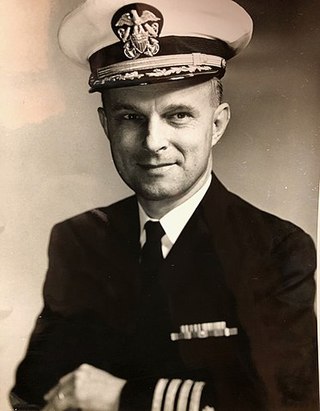
Blake Wayne Van Leer was a United States Navy officer who commanded the naval construction Battalion Seabees during World War II and the Vietnam War. He led the expansion of submarine-launched ballistic missile programs and the OMEGA Navigation System used for communication to the U.S. submarine fleet. He received the Legion of Merit award and the Moreel Medal for outstanding contributions to military engineering. He was the son of Georgia Institute of Technology president Blake R. Van Leer and women's rights activist Ella Lillian Wall Van Leer.
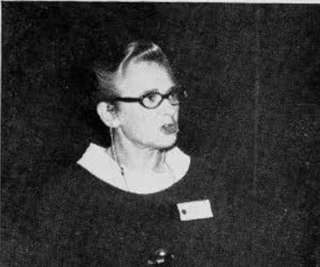
Ruth Shafer, was the chair of the first international conference of women engineers and scientists.
Alma U. Martinez Fallon is a retired marine engineer who worked for many years on the design and construction of military ships at Newport News Shipbuilding and its successor organizations, Northrop Grumman Newport News and Huntington Ingalls Industries. Originally from the Dominican Republic, she emigrated with her family to the US when she was a child. She was president of the Society of Women Engineers.
Rebecca "Becky" Hall Sparling, P.E. was an American materials engineer and registered mechanical engineer in the manufacturing, automotive, and aerospace industries from the 1930s to the late 1960s, who had "established a nation-wide reputation as a metallurgist". Often working on classified projects, Sparling advanced the field of metallurgy in severe environments and developed non-destructive engineering test methods, especially in brittle, high-strength, or specialized materials.

















